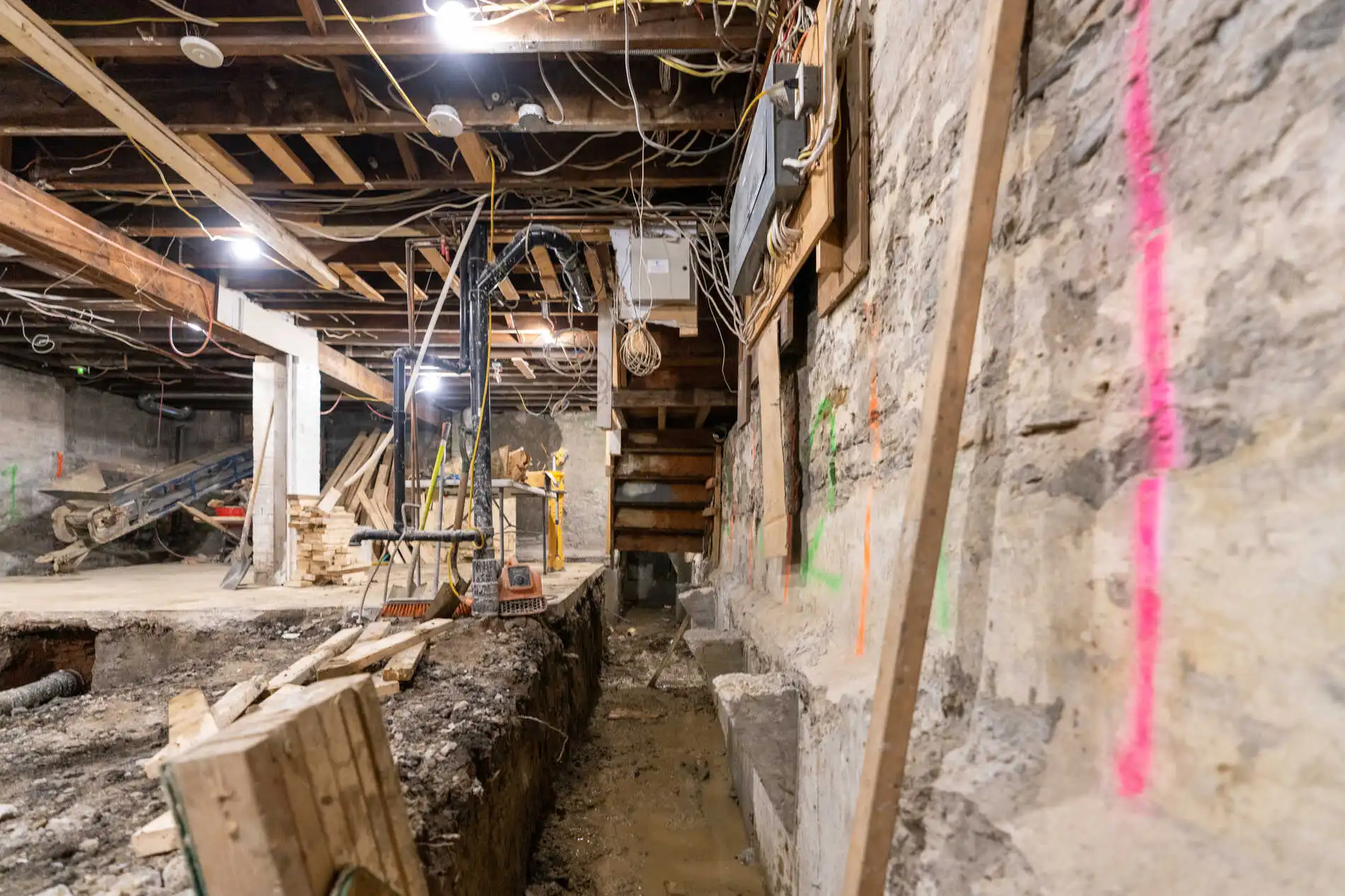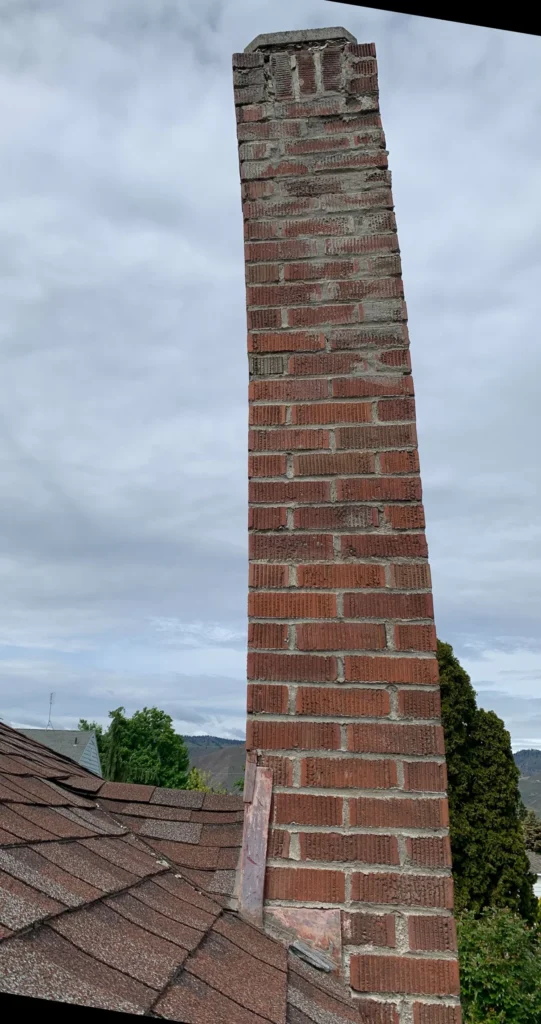Signs You Need Underpinning in Toronto: Cracks, Uneven Floors, and More

Is your Toronto home showing signs of distress? Are you noticing cracks snaking along your basement walls, or feeling a disconcerting slope underfoot? These could be red flags signaling a deeper issue: foundation problems. And in a city like Toronto, with its unique soil conditions and mix of architectural ages, foundation issues are unfortunately quite common.
Underpinning is a crucial process that involves strengthening and stabilizing your home’s foundation. Think of it as giving your house a much-needed lift and ensuring it stands strong for years to come. Ignoring foundation problems is not an option; they only worsen over time, leading to costly repairs and even safety hazards.
This comprehensive guide will walk you through the telltale signs that your Toronto home may require underpinning. At JVP Build & Design, we have years of experience helping Toronto homeowners restore the integrity of their homes. Read on to learn the signs, and if you suspect you need underpinning, don’t hesitate to contact us for a consultation.
Telltale Signs Your Toronto Home Needs Underpinning
1. Cracks in Foundation Walls
One of the most obvious signs that you need underpinning in Toronto is the presence of cracks in your foundation walls. While some minor cracks are normal in any home, certain types of cracks can signal serious foundation problems.
Types of Cracks
Not all cracks are created equal. Here’s a breakdown of the different types of cracks you might find in your foundation walls:
- Hairline Cracks: These are very thin cracks, often less than 1/16 of an inch wide. They are usually caused by minor settling and are not a major cause for concern.
- Vertical Cracks: These cracks run vertically along the foundation wall. They can be caused by minor settling or shrinkage of the concrete. While not always a major issue, they should be monitored for any widening or lengthening.
- Horizontal Cracks: These cracks run horizontally along the foundation wall. They are often a sign of significant pressure on the wall from the soil outside. Horizontal cracks are a serious warning sign and should be inspected by a professional.
- Diagonal Cracks: These cracks run at an angle across the foundation wall. They can indicate that the foundation is settling unevenly. Diagonal cracks are a cause for concern and require professional assessment.
- Stair-Step Cracks: These cracks resemble a staircase, stepping up or down the foundation wall. They are often found in brick or block foundations and indicate significant movement. Stair-step cracks require immediate attention.
If you spot any cracks, it’s crucial to have them assessed by a professional to determine their cause and severity. When inspecting your foundation, be sure to check both the interior and exterior walls. Pay close attention to corners, where cracks are more likely to form. Also, examine the areas around windows and door frames for any signs of cracking or separation.

2. Uneven or Sloping Floors
Another common sign of foundation problems is uneven or sloping floors. If you notice that marbles roll across the floor on their own, or if your furniture seems to wobble, it could be a sign that your foundation is settling.
Signs of Uneven Floors
- Visual cues: Look for obvious slopes or dips in the floor.
- Furniture wobbling: Furniture that rocks or feels unstable can indicate an uneven floor.
- Doors sticking: Doors that stick or swing open on their own can be a sign of a shifting foundation.
- Rolling objects: If marbles or balls roll across the floor without being pushed, the floor is likely uneven.
Checking for Floor Issues
To determine if your floors are uneven, use a level to check for any sloping. You can also inspect the floor joists in your basement for any signs of sagging or bowing. If you notice any significant unevenness, it’s essential to have your foundation inspected by a professional.
3. Doors and Windows Sticking or Jamming
Do your doors stick or jam, even when the weather is dry? This seemingly minor annoyance can actually be a sign of foundation issues. When a foundation settles unevenly, it can cause the frame of your house to shift, putting pressure on doors and windows and making them difficult to open or close.
It’s important to differentiate between sticking caused by humidity and sticking caused by foundation problems. Wood doors and windows are naturally susceptible to swelling in humid weather, which can lead to sticking. However, if you notice that the sticking persists even in dry conditions, or if it’s happening in multiple doors and windows throughout your house, it could be a sign of foundation settlement.
Pay close attention to how your doors and windows are behaving. Are they suddenly sticking when they didn’t before? Do you have to force them open or closed? Are there visible gaps or misalignments in the frames? These are all red flags that warrant a closer look at your foundation.
4. Water Seepage and Moisture in the Basement
Basements are particularly vulnerable to water damage, especially in older Toronto homes. Cracks in your foundation walls can allow water to seep into your basement, leading to a host of problems.
Signs of Water Damage
- Musty odours: A persistent musty smell in your basement is often a sign of dampness and potential mold growth.
- Efflorescence: This white, powdery substance on your basement walls indicates that water is evaporating from the concrete, leaving behind mineral deposits.
- Mold growth: Mold thrives in damp environments. If you see mold growing on your basement walls, floors, or belongings, it’s a sure sign of a moisture problem.
- Water stains: Water stains on your walls or floors are evidence of past water intrusion.
- Puddles or damp spots: Any visible water or dampness on the floor or walls is a clear indication of water seepage.
Water seepage not only damages your belongings and creates an unhealthy living environment, but it can also exacerbate foundation problems. The presence of water in the soil around your foundation can weaken the soil and contribute to further settlement. It’s crucial to address any water seepage issues promptly to prevent further damage to your foundation and your home.
5. Gaps Between Walls and Ceilings or Floors
As your foundation settles, it can cause gaps to appear between your walls and ceilings or floors. These gaps are a visual indication that your house is shifting and that the structural integrity may be compromised.
Pay close attention to the basement ceiling, as this is where gaps are often most noticeable. You might also see gaps around window and door frames, or where walls meet the floor. These gaps can be small and subtle, or they can be large and unsightly. Regardless of their size, they are a sign that your foundation needs attention.
6. Leaning Chimney or Porch
While less common, a leaning chimney or porch is a dramatic and concerning sign of foundation problems. These structures are attached to your home’s foundation, so if they are leaning or tilting, it’s a clear indication that the foundation is settling unevenly.
A leaning chimney can be particularly dangerous, as it could potentially collapse and cause significant damage to your home or even injury to those nearby. If you notice even a slight lean in your chimney or porch, it’s essential to have your foundation inspected immediately.

Soil and Environmental Factors in Toronto
Toronto’s unique environmental conditions can contribute to foundation problems. Understanding these factors can help you better appreciate why underpinning is often necessary in this city.
Clay Soil
Much of Toronto is built on clay soil, which is known for its expansive properties. Clay soil absorbs water and expands when wet, and then shrinks when it dries out. This constant expansion and contraction can put significant pressure on your foundation, leading to cracks and settlement.
Mature Trees
Many Toronto neighbourhoods boast mature trees, which add to the city’s beauty. However, large trees near your foundation can also contribute to foundation problems. Tree roots can grow under your foundation and absorb moisture from the soil, causing the soil to shrink and settle.
Aging Infrastructure
Toronto is home to many older homes with aging foundations. Over time, these foundations can deteriorate and become more susceptible to settlement. Factors like poor original construction, inadequate drainage, and years of exposure to the elements can all contribute to foundation problems in older homes.
What to Do If You Suspect You Need Underpinning
If you’ve noticed any of the signs mentioned above, it’s crucial to take action promptly. Foundation problems rarely resolve themselves and will likely worsen over time if left untreated.
Professional Inspection
The first step is to schedule a professional foundation inspection. A qualified foundation specialist will assess your foundation, identify the underlying causes of the problems, and recommend the most appropriate solutions.
Underpinning Methods
There are several different methods of underpinning, each with its own advantages and disadvantages. Some common methods include:
- Mass Concrete Underpinning: This traditional method involves excavating sections beneath the foundation and pouring concrete to increase its depth and support.
- Mini-Piled Underpinning: Steel piles are driven deep into the ground to support the foundation. This method is less disruptive than mass concrete underpinning and is often used in areas with limited access.
- Helical Pier Underpinning: These screw-like piers are installed into the ground until they reach stable soil. They are a versatile option and can be used in a variety of soil conditions.
The best method for your home will depend on factors such as the severity of the foundation problems, the type of soil, and the accessibility of the foundation.
Choosing a Contractor
Selecting a reputable underpinning contractor is crucial. Here are some tips to help you choose the right contractor for your project:
- Check licenses and insurance: Make sure the contractor is licensed and insured to perform underpinning work in Toronto.
- Ask for references: Request references from previous clients and contact them to inquire about their experience with the contractor.
- Read online reviews: Check online reviews on sites like Google My Business, HomeStars, and Better Business Bureau to get an idea of the contractor’s reputation.
- Get multiple quotes: Compare quotes from several different contractors to ensure you’re getting a fair price.
- Ask about warranties: Inquire about warranties on the underpinning work.
Conclusion
Your home’s foundation is literally its bedrock, providing stability and support for everything above it. In a city like Toronto, with its specific soil conditions and mature neighbourhoods, foundation issues are not uncommon. However, by recognizing the signs early on, you can take proactive steps to protect your investment and prevent further damage.
Remember the key warning signs:
- Cracks in your foundation walls, especially horizontal, diagonal, or stair-step cracks.
- Uneven or sloping floors.
- Doors and windows that stick or jam.
- Water seepage and moisture in your basement.
- Gaps between walls and ceilings or floors.
- A leaning chimney or porch.
If you notice any of these signs, don’t delay! Contact the foundation experts at JVP Build & Design. We have the experience and expertise to assess your foundation, determine the best course of action, and provide high-quality underpinning solutions tailored to your home’s specific needs.
At JVP Build & Design, we’re not just fixing foundations; we’re restoring peace of mind. Contact us today for a free consultation and let us help you ensure your Toronto home stands strong for years to come.

